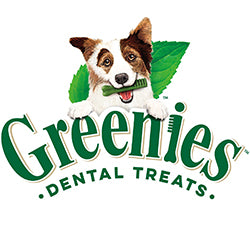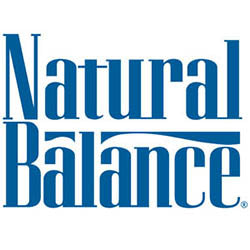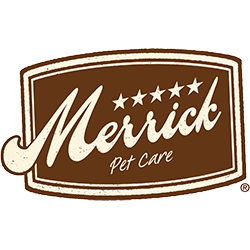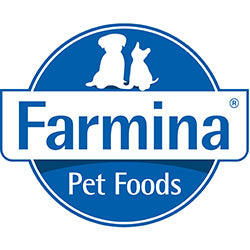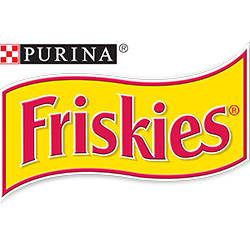
Title: Basic Pet Care: A Guide to Keeping Your Pets, Feathered, or Scaly Friend Healthy and Happy
Caring for a pet is a rewarding experience that comes with great responsibility. Whether you're a first-time pet owner or a seasoned pro, understanding the basic needs of your furry, feathered, or scaly companion is essential for ensuring their health and happiness. In this comprehensive guide, we'll discuss the fundamental aspects of pet care, including nutrition, grooming, exercise, socialization, and preventive healthcare.
Part 1: Nutrition
1.1 Choosing the Right Food
A well-balanced and nutritious diet is the foundation of your pet's overall health. Invest time researching the best food options for your pet, considering their age, size, breed, and specific needs. Consult your veterinarian for recommendations on high-quality commercial pet foods or guidelines for preparing homemade meals. Remember, pets' nutritional needs can vary significantly based on factors such as your pet's age, activity level, and medical conditions.
1.2 Feeding Schedule and Portion Control
Establish a consistent feeding schedule for your pet to maintain its metabolism and digestive health. Feeding most pets twice a day is appropriate, but talk with your veterinarian to determine your pet's optimal feeding frequency. Feeding your pet too much, can lead to obesity and many other health issues, so be mindful of portion sizes and adjust them according to your pet's needs.
1.3 Treats and Supplements
Treats can greatly reward your pet and strengthen your bond, but they should be given in moderation. Look for healthy treats and avoid those with artificial colors, flavors, or high sugar content. Additionally, discuss any supplements with your veterinarian before incorporating them into your pet's diet, as some may not be necessary or even harmful if given inappropriately.
Part 2: Grooming
2.1 Regular Brushing
Regular brushing is essential for maintaining your pet's coat and skin health. It helps remove loose hair, dirt, and debris while distributing natural oils that keep the coat healthy and shiny. Choose a brush or comb suitable for your pet's coat type and brush them gently, being mindful of any sensitive areas.
2.2 Bathing
The frequency of bathing depends on your pet's breed, coat type, and lifestyle. Some pets may require weekly baths, while others can go several weeks between baths. Use a pet-specific shampoo and be gentle while bathing your pet. Avoid getting water or soap in their eyes, ears, or nose.
2.3 Nail Trimming
Regular nail trimming is essential for your pet's comfort and health. Overgrown nails can be painful for your pet, and they can have difficulty walking and may even lead to infections. Familiarize yourself with the proper nail trimming techniques, and be cautious not to cut the quick, which contains blood vessels and nerves. If you need more clarification about trimming your pet's nails, seek assistance from a professional groomer or veterinarian.
2.4 Dental Care
Oral hygiene is a crucial aspect of your pet's overall health. Brush your pet's teeth regularly using a pet-specific toothpaste and toothbrush to prevent plaque buildup, gum disease, and bad breath. In addition to regular brushing, consider dental chews and toys designed to help clean your pet's teeth.
Part 3: Exercise and Enrichment
3.1 Regular Exercise
Physical activity is essential for maintaining your pet's health, weight, and overall well-being. The type and duration of exercise will depend on your pet's age, breed, and fitness level. Daily walks, play sessions, or outdoor activities can keep your pet active and engaged.
3.2 Mental Stimulation
Mental stimulation is as important for your pet's overall
health and happiness. Interactive toys, puzzle feeders, or training sessions can help challenge your pet's mind and prevent boredom. Rotate toys regularly to maintain their interest and offer new challenges.
3.3 Socialization
Proper socialization is crucial for your pet's emotional well-being and behavior. Introduce your pet to new people, animals, and environments at a young age to help them become confident and well-adjusted adults. Regular socialization can also help prevent fear, aggression, or anxiety-related issues.
Part 4: Preventive Healthcare
4.1 Regular Veterinary Visits
Schedule regular veterinary check-ups for your pet, typically twice a year, depending on your pet's health status. These visits allow your veterinarian to monitor your pet's health, administer vaccinations, and identify potential issues before they become serious problems.
4.2 Vaccinations
Vaccinations are vital in protecting your pet from contagious and potentially fatal diseases. Follow your veterinarian's recommendations for the appropriate vaccination schedule based on your pet's age, breed, and lifestyle.
4.3 Parasite Prevention
Protect your pet from hurtful insects such as fleas, ticks, and heartworm using preventive medications as your veterinarian recommends. These parasites can transmit diseases and cause severe discomfort or illness in your pet. Pet owners should regularly examine their pet for signs of parasites and consult their veterinarian if they suspect an infestation.
4.4 Spaying and Neutering
Spaying or neutering your pet can have numerous health and behavioral benefits, such as reducing the risk of certain cancers, minimizing aggression, and preventing overpopulation. Talk to your veterinarian about the appropriate age to spay or neuter your pet based on its breed and individual needs.
4.5 Pet Insurance
Consider spending your money on pet insurance to help cover the costs of unexpected veterinary care. Pet insurance can provide peace of mind knowing that your pet will receive medical care without causing significant financial stress.
Part 5: Creating a Safe and Comfortable Environment
5.1 Pet-Proofing Your Home
Ensure your home is a safe environment for your pet by pet-proofing each room. Remove or secure potential hazards such as electrical cords, toxic plants, and small objects that could be swallowed. Also, provide a designated area for your pet to eat, sleep, and play.
5.2 Appropriate Shelter
Provide appropriate shelter for your pet, whether indoors or outdoors. Indoor pets should have a comfortable and quiet space to rest, away from drafts, direct sunlight, or excessive noise. For outdoor pets, ensure they have access to shade, shelter from the elements, and a secure enclosure to prevent escape or injury.
5.3 Training and Boundaries
Establish boundaries and rules for your pet through consistent training. Positive reinforcement, such as praise and treats, can teach your pet good behavior. If you're unsure how to train your pet or need assistance with specific behavioral issues, consider getting the help of a professional trainer or behaviorist.
Primary pet care is essential for keeping your furry, feathered, or scaly companion healthy and happy. By focusing on proper nutrition, grooming, exercise, socialization, and preventive healthcare, you can provide a nurturing environment where your pet can thrive. Remember, being a responsible pet owner benefits your pet and contributes to a stronger bond between you and your beloved companion. You can enjoy many years of companionship and love with your pet with the proper care and attention.
Part 1: Nutrition
1.1 Choosing the Right Food
A well-balanced and nutritious diet is the foundation of your pet's overall health. Invest time researching the best food options for your pet, considering their age, size, breed, and specific needs. Consult your veterinarian for recommendations on high-quality commercial pet foods or guidelines for preparing homemade meals. Remember, pets' nutritional needs can vary significantly based on factors such as your pet's age, activity level, and medical conditions.
1.2 Feeding Schedule and Portion Control
Establish a consistent feeding schedule for your pet to maintain its metabolism and digestive health. Feeding most pets twice a day is appropriate, but talk with your veterinarian to determine your pet's optimal feeding frequency. Feeding your pet too much, can lead to obesity and many other health issues, so be mindful of portion sizes and adjust them according to your pet's needs.
1.3 Treats and Supplements
Treats can greatly reward your pet and strengthen your bond, but they should be given in moderation. Look for healthy treats and avoid those with artificial colors, flavors, or high sugar content. Additionally, discuss any supplements with your veterinarian before incorporating them into your pet's diet, as some may not be necessary or even harmful if given inappropriately.
Part 2: Grooming
2.1 Regular Brushing
Regular brushing is essential for maintaining your pet's coat and skin health. It helps remove loose hair, dirt, and debris while distributing natural oils that keep the coat healthy and shiny. Choose a brush or comb suitable for your pet's coat type and brush them gently, being mindful of any sensitive areas.
2.2 Bathing
The frequency of bathing depends on your pet's breed, coat type, and lifestyle. Some pets may require weekly baths, while others can go several weeks between baths. Use a pet-specific shampoo and be gentle while bathing your pet. Avoid getting water or soap in their eyes, ears, or nose.
2.3 Nail Trimming
Regular nail trimming is essential for your pet's comfort and health. Overgrown nails can be painful for your pet, and they can have difficulty walking and may even lead to infections. Familiarize yourself with the proper nail trimming techniques, and be cautious not to cut the quick, which contains blood vessels and nerves. If you need more clarification about trimming your pet's nails, seek assistance from a professional groomer or veterinarian.
2.4 Dental Care
Oral hygiene is a crucial aspect of your pet's overall health. Brush your pet's teeth regularly using a pet-specific toothpaste and toothbrush to prevent plaque buildup, gum disease, and bad breath. In addition to regular brushing, consider dental chews and toys designed to help clean your pet's teeth.
Part 3: Exercise and Enrichment
3.1 Regular Exercise
Physical activity is essential for maintaining your pet's health, weight, and overall well-being. The type and duration of exercise will depend on your pet's age, breed, and fitness level. Daily walks, play sessions, or outdoor activities can keep your pet active and engaged.
3.2 Mental Stimulation
Mental stimulation is as important for your pet's overall
health and happiness. Interactive toys, puzzle feeders, or training sessions can help challenge your pet's mind and prevent boredom. Rotate toys regularly to maintain their interest and offer new challenges.
3.3 Socialization
Proper socialization is crucial for your pet's emotional well-being and behavior. Introduce your pet to new people, animals, and environments at a young age to help them become confident and well-adjusted adults. Regular socialization can also help prevent fear, aggression, or anxiety-related issues.
Part 4: Preventive Healthcare
4.1 Regular Veterinary Visits
Schedule regular veterinary check-ups for your pet, typically twice a year, depending on your pet's health status. These visits allow your veterinarian to monitor your pet's health, administer vaccinations, and identify potential issues before they become serious problems.
4.2 Vaccinations
Vaccinations are vital in protecting your pet from contagious and potentially fatal diseases. Follow your veterinarian's recommendations for the appropriate vaccination schedule based on your pet's age, breed, and lifestyle.
4.3 Parasite Prevention
Protect your pet from hurtful insects such as fleas, ticks, and heartworm using preventive medications as your veterinarian recommends. These parasites can transmit diseases and cause severe discomfort or illness in your pet. Pet owners should regularly examine their pet for signs of parasites and consult their veterinarian if they suspect an infestation.
4.4 Spaying and Neutering
Spaying or neutering your pet can have numerous health and behavioral benefits, such as reducing the risk of certain cancers, minimizing aggression, and preventing overpopulation. Talk to your veterinarian about the appropriate age to spay or neuter your pet based on its breed and individual needs.
4.5 Pet Insurance
Consider spending your money on pet insurance to help cover the costs of unexpected veterinary care. Pet insurance can provide peace of mind knowing that your pet will receive medical care without causing significant financial stress.
Part 5: Creating a Safe and Comfortable Environment
5.1 Pet-Proofing Your Home
Ensure your home is a safe environment for your pet by pet-proofing each room. Remove or secure potential hazards such as electrical cords, toxic plants, and small objects that could be swallowed. Also, provide a designated area for your pet to eat, sleep, and play.
5.2 Appropriate Shelter
Provide appropriate shelter for your pet, whether indoors or outdoors. Indoor pets should have a comfortable and quiet space to rest, away from drafts, direct sunlight, or excessive noise. For outdoor pets, ensure they have access to shade, shelter from the elements, and a secure enclosure to prevent escape or injury.
5.3 Training and Boundaries
Establish boundaries and rules for your pet through consistent training. Positive reinforcement, such as praise and treats, can teach your pet good behavior. If you're unsure how to train your pet or need assistance with specific behavioral issues, consider getting the help of a professional trainer or behaviorist.
Primary pet care is essential for keeping your furry, feathered, or scaly companion healthy and happy. By focusing on proper nutrition, grooming, exercise, socialization, and preventive healthcare, you can provide a nurturing environment where your pet can thrive. Remember, being a responsible pet owner benefits your pet and contributes to a stronger bond between you and your beloved companion. You can enjoy many years of companionship and love with your pet with the proper care and attention.
- Choosing a selection results in a full page refresh.




